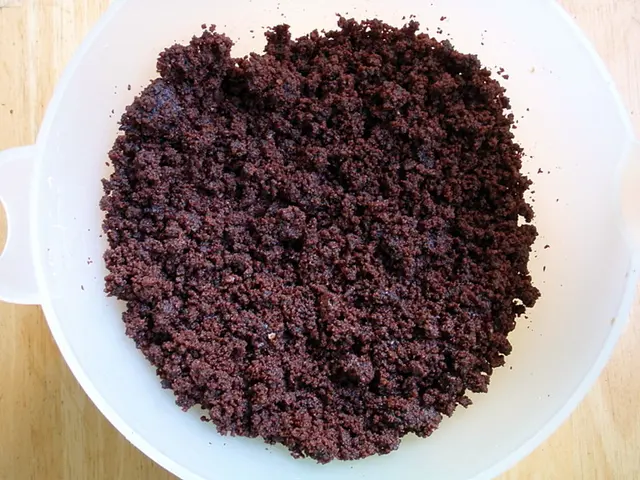Distinguishing age spots from skin cancer: Recognizing the Differences
Age Spots vs. Skin Cancer: Understanding the Differences and Symptoms
As individuals age, an boxes may start to appear on the skin, often resembling skin cancer or precancerous growths. However, understanding the key differences between these conditions can help identify when medical attention is required.
Age Spots
Age spots, also known as solar lentigines or liver spots, are small patches that appear darker than the surrounding skin. They are generally flat, smooth, and non-itchy, in contrast to skin cancer lesions. Age spots develop due to the body's increased production of melanin to protect the skin from UV radiation. These spots are common on light skin but can occur on any skin tone, typically becoming noticeable from middle age onwards.
Skin Cancer
Skin cancer is a type of cancer that occurs when skin cells are damaged by UV radiation or other environmental factors. UV radiation from sunlight or tanning beds is the primary cause of skin cancer. Unlike age spots, skin cancer can be harmful and may spread to other parts of the body. The three most common types of skin cancer are basal cell carcinoma, squamous cell carcinoma, and melanoma. Actinic keratosis is another type of precancerous growth that can be mistaken for an age spot, as it appears similar to a rough, scaly patch.
Differentiating Age Spots and Skin Cancer
There are several key differences between age spots and skin cancer that can help individuals identify which condition is present:
- Texture: Age spots are smooth, while skin cancer lesions are often rough, scaly, or crusty.
- Color: Age spots range from yellow, brown, or gray to black, while skin cancer lesions can have a variety of colors, including pink, blue, purple, black, or brown.
- Shape: Skin cancer lesions are asymmetrical, with irregular borders, while age spots have defined borders.
- Location: Age spots are more likely to appear on sun-exposed areas, such as the face, hands, shoulders, and arms, while skin cancer can occur anywhere on the body.
- ** Symptoms**: Skin cancer may present with additional symptoms such as pain, itching, oozing, or bleeding, while age spots are generally asymptomatic.
When to Consult a Doctor
If an individual notices any unusual changes on the skin, such as new or changing spots, it is essential to consult a doctor. Diagnosing skin cancer early can make treatment more effective and improve health outcomes. Signs of skin cancer may include changes in size, color, shape, or location, skin growths that are different from other marks on the skin, and persistent sores or lesions that do not heal within four weeks.
Diagnosis and Treatment
A doctor or dermatologist can diagnose age spots based on their appearance during a physical examination. If necessary, a skin biopsy may be performed to test for other conditions. Age spots do not require treatment as they are not harmful, but some individuals may opt for cosmetic treatments to reduce their appearance.
Treatment options for age spots include over-the-counter creams, chemical peels, and laser or cryotherapy treatments. Skin cancer treatment depends on the type, size, and location of the cancer. Surgical excision, radiation therapy, chemotherapy, and immunotherapy are common options for skin cancer treatment.
In conclusion, understanding the differences between age spots and skin cancer is crucial in identifying when medical attention may be necessary. While age spots are harmless, prompt diagnosis and treatment of skin cancer can lead to better outcomes. If an individual notices any unusual changes on the skin, consulting a doctor is essential for early detection and effective treatment.
- In dermatology, it is essential to differentiate age spots from skin cancer, considering that both conditions may resemble each other based on their appearance.
- Skin cancer, a type of cancer affecting skin cells, can be harmful and may spread to other parts of the body, unlike age spots that are harmless.
- In the field of oncology, melanoma is one of the three most common types of skin cancer, while age spots are small patches that appear darker than the surrounding skin due to increased melanin production from UV radiation.
- As a part of health-and-wellness and medical-conditions awareness, seniors should be educated about the differences between age spots and skin cancer, with a focus on identifying the symptoms to seek early treatment when necessary.
- Given the importance of science and early detection, individuals should pay attention to changes in skin conditions, reaching out to medical professionals if they suspect other skin cancers or precancerous growths, such as actinic keratosis, besides age spots.







